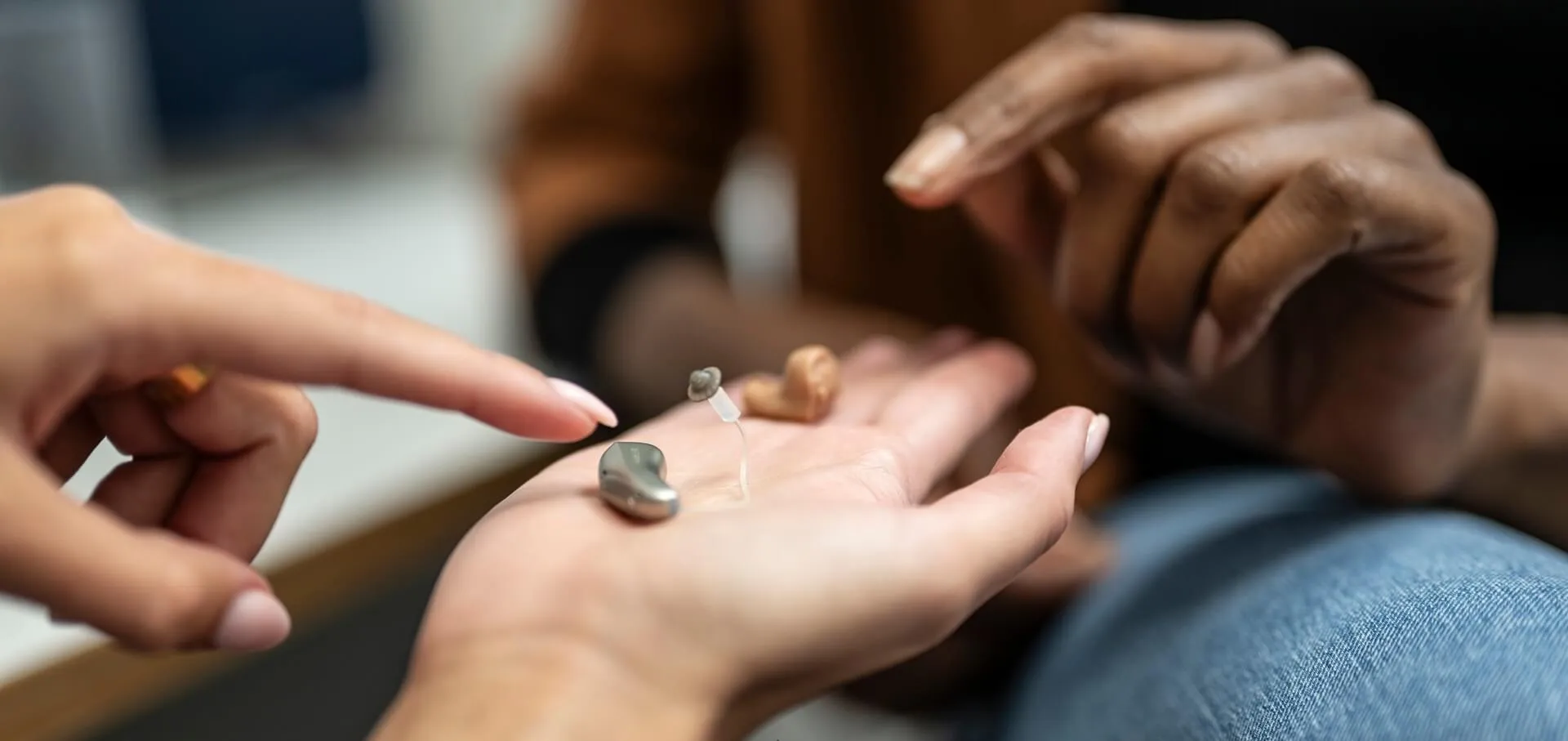How to fix hearing aids: troubleshooting common problems

How to fix hearing aids: troubleshooting common problems
5 minutes
Lifetstyle 28 August 2025
28 August 2025
Hearing aids are an important part of daily life for many people, so it's natural for them to have the occasional hiccup. Everyday wear and tear, changes in the weather, or even a buildup of earwax can sometimes cause minor issues.
The good news? Many of these problems are quick and simple to sort at home. With just a few easy troubleshooting steps, you can often get your hearing aids working perfectly again, saving you time and avoiding unnecessary trips for hearing aid repairs.
Understanding common hearing aid issues
Hearing aids are designed to make life easier, but like any piece of technology, they can sometimes run into problems. Knowing the most common issues, and how to fix them, can help you get back to clearer hearing more quickly. If you're not sure whether your hearing aid problem is linked to your hearing, our free adult hearing test can help you understand more.
No sound or weak sound from hearing aids
If your hearing aid is silent or the sound feels faint, it could be something as simple as a blocked microphone or earwax in the tubing. Try:
• Checking and cleaning the device.
• Replacing the battery with fresh hearing aid batteries.
• Making sure it's switched on and set to the right programme.
If the issue is earwax, you might benefit from professional earwax removal to clear the blockage.
Distorted or unclear sound
Moisture, battery connection issues, or worn tubing can affect sound quality. You can:
• Dry your hearing aid with a dehumidifier designed for hearing devices.
• Inspect and gently clean the battery contacts.
• Replace the tubing if it looks cracked or stiff.
If you're unsure whether the sound issue is from your hearing aid or your hearing itself, take a look at our hearing explained guide for tips on understanding your hearing.
Dealing with feedback and whistling
That high-pitched whistle (feedback) is often caused by a loose fit, earwax build-up, or sound escaping and looping back into the microphone. To help:
• Make sure your hearing aid fits snugly.
• Remove any earwax from your ear or the device - our tips for ear cleaning can help you learn how to clean ears safely.
• Avoid placing your hand or phone too close to the hearing aid's microphone.
Comfort and fit problems
Your hearing aid should feel comfortable and secure. If it's causing irritation or slipping out:
• Check that the earmould or dome is the right size.
• Speak to your audiologist, they can adjust the fit, reshape the mould, or suggest a different style for better comfort.
• Our living with hearing aids guide has more advice on making your hearing aid a part of your everyday routine.
Battery drains quickly
If your hearing aid batteries aren't lasting as long as they used to, it could be down to frequent Bluetooth streaming, older batteries, or incorrect storage. You can:
• Limit Bluetooth streaming when possible.
• Turn off the device when it's not in use.
• Store batteries for hearing aids in a cool, dry place until you need them.
Maintenance and cleaning tips
Keeping your hearing aids clean and well-maintained is one of the easiest ways to prevent problems and keep them performing at their best. Just a few minutes of care each day can make a big difference to sound quality and comfort.
Clean daily: use a soft, dry cloth to wipe your hearing aids and remove any wax or debris.
Check the openings: gently brush the microphone ports and receiver with a specialist cleaning tool to prevent blockages.
Keep them dry: moisture can cause damage, so store your hearing aids in a dry, protective case when you're not using them.
Change filters and domes regularly: these small parts protect your device from earwax and dirt but need replacing to stay effective.
For step-by-step help, see our guide to hearing aid maintenance and cleaning, including tips on how to clean your hearing aids and maintaining your hearing aids.
When to get professional help
While many hearing aid issues can be fixed at home, there are times when it's best to let a professional take a look. Book an appointment for hearing aid repairs near you if:
• Your hearing aids still aren't working after basic troubleshooting.
• You notice physical damage, such as cracks or loose parts.
• There's persistent feedback or whistling that doesn't improve with fit adjustments.
• The device is uncomfortable to wear, even after trying different domes or earmoulds.
• You suspect a deeper technical fault, such as a faulty receiver or microphone.
If you're ever unsure, it's always worth getting your hearing aids checked - and our hearing aid aftercare service ensures you'll always have expert support when you need it.
Regular care and cleaning will help keep your hearing aids in great shape, and it's perfectly normal for them to need occasional adjustments or repairs.
By combining at-home maintenance with professional support when needed, you can make sure your hearing aids continue to give you clear, reliable sound every day.
Empowering connections: communicating with people with hearing loss
New study reveals your headphones are a bacterial nightmare



